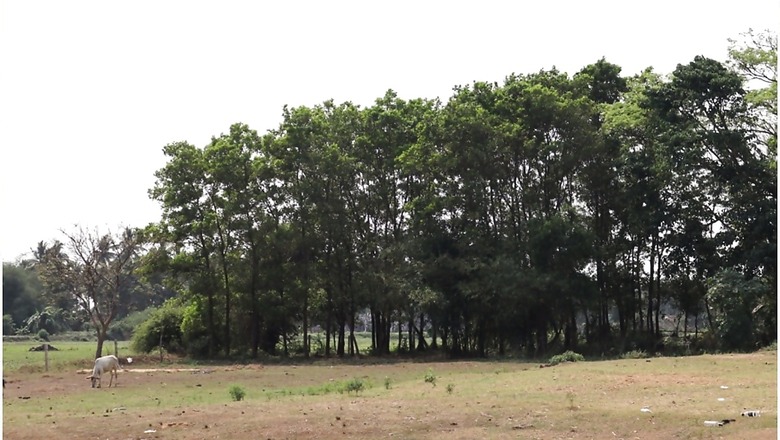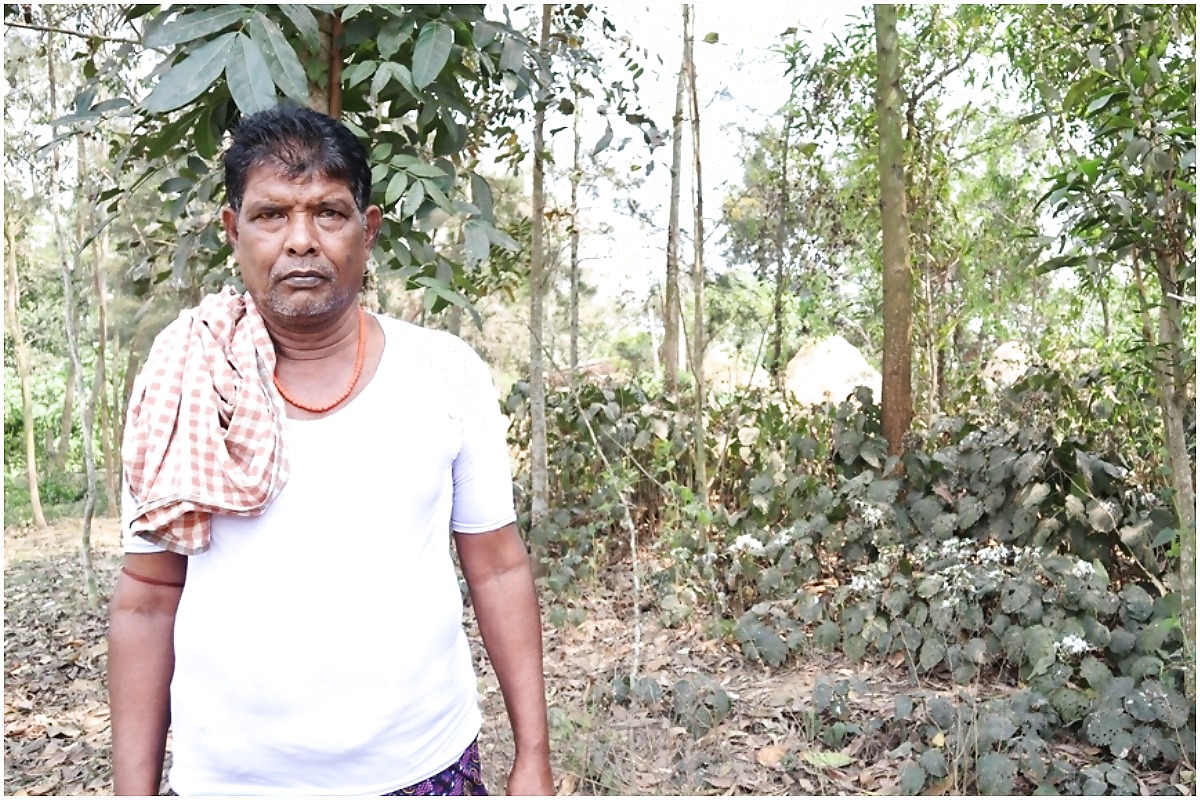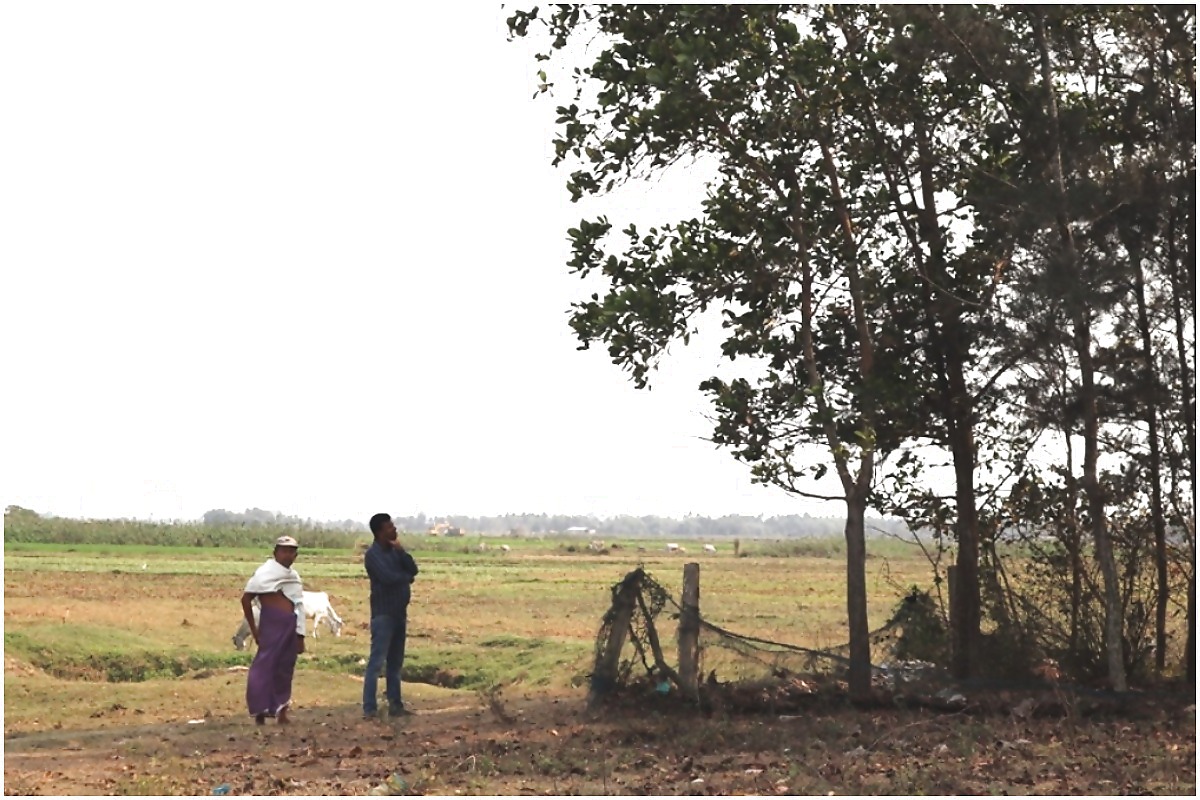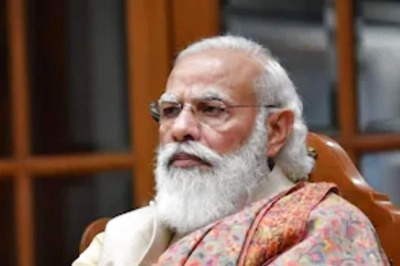
views
Jagatsinghpur, Odisha: According to a research paper published in Science of the Total Environment last year, flood hazards in the Jagatsinghpur district of Odisha will increase from the current 12.55% to 27.35% by 2040. Things for Jagatsinghpur look as grim on the ground as they are in the air. That’s because, in its 2018 report, the Central Board of Pollution Control had flagged the port city of Paradip in the district as “severely polluted”.
And so, about 10 kilometres away, the residents of the Kujang Block in the district are trying to address the twin issues with one solution — mini forests. In the last two decades, 20 villages here have grown trees in clusters. These forests are spread over an acre or less across different pockets and they add up to 35 acres in total.
The residents hope that these mini forests will protect their coastal habitat against riverine flooding and give them cleaner air to breathe.
Their concerns aren’t misplaced. The Mahanadi river flows to the north of the Kujang block while the Bay of Bengal lies just 10 kilometres away to the east. Owing to its proximity to the river and the sea, the block is in a constant grip of floods and cyclones. Loss of life, damage to property, and disruption of electricity, Internet and road connectivity, the residents have faced these several times.
“Low-lying areas such as Ersama and Kujang are at greater risk of flooding,” Mohit Mohanty, a researcher from Odisha, confirms to this journalist over a call from the Western University, London, where he is at currently. In 2018, he had done a study on the floods in the Jagatsinghpur district.
“Low-lying areas such as Ersama and Kujang are at greater risk of flooding.” — Mohit Mohanty, a researcher from Odisha
Making the right choices
The residents have mostly planted locally-grown species such as Indian pongamia, lebbeck, teak, samara, jamun, guava and banana. Bhubaneswar-based environmentalist Jaya Krushna Panigrahi weighs in on the community initiative and says, “These trees will hold the soil firmly in place and reduce the impact of the cyclones and floods that these areas are vulnerable to.” A 2011 research paper also states that pongamia (Milletia Pinnata) are planted along highways, roads and canals to check soil erosion. Another study talks about the soil-holding ability of the lebbeck.
These trees have been planted along the sides of the roads and canals and barren lands to make them “resilient”, informs Surendra Tarai, a resident of Ucchabanadapur village. He is referring to the ability of the woodlands to prevent soil erosion during flooding.
The villagers have also planted Casuarina, Acacia and Eucalyptus but in fewer numbers. Amresh Naresh Samanth, who started this afforestation drive, explains why, “On the one hand, these trees grow fast but on the other hand, these are invasive species that prevent the local vegetation from thriving. That’s why we haven’t planted them much.” This report by Down To Earth also critiques the plantation of Casuarinas as ‘bioshields’ along the coasts, something which the Tamil Nadu government had undertaken on a large scale after the Indian Ocean Tsunami of 2004.

One man, many volunteers
The afforestation drive in the Kujang block kicked off from the Biswali village in 2000 and spread to adjoining areas subsequently. This is thanks to Samanth, who was 25 years old at that time. Concerned over how barren and fragile his village looked, he decided to re-forest it. Twenty years on, Samanth, who works as an electrical engineer at Paradip Port, has come to be known as the Brukhya Manab (Forest Man) of Jagatsinghpur.
Today, his afforestation movement has crossed over to other districts too. In Kendrapara and Dhenkanal, these mini forests total up to 15 acres.
Now 46 years old, Samanth says he could not have achieved this without the support of the local communities. “It took time but slowly like-minded youth started to volunteer with me – for free. Each of them became advocates/ambassadors of the drive and brought more people in. Today, I have a network of 110 volunteers. We create awareness about the importance of forests [in mitigating climate change] among villagers, and arrange logistics for the plantation drives,” he talks about the group, which goes by the name of Baba Baluenkeswar Gramya Bikash Parishad.
Sukhadev Tarai, a 37-year-old volunteer from Paradeepgarh, tells us why he joined the cause. “In school, I had studied about the importance of trees in maintaining ecological balance. After I saw the threat our area was [continually] facing from the cyclones, I decided to help improve the green cover.”
Once the villagers came on board, everything from the plantation of saplings to their upkeep and protection was done by them. Except for the occasional aid provided by the forest department, there was no external intervention.
“We promote afforestation in revenue wastelands [as done] by the villagers in Kujang. We gave them subsidised seeds for Re1 per seed. We had also provided free seeds under the Green Mahanadi Mission. We had distributed seeds of several tree species including the fruit-bearing ones,” Rajnagar Divisional Forest Officer Bikash Kumar Nayak informs 101Reporters.
‘Coastal villages should grow forests’
It was the harsh memories and learnings from the 1999 Super Cyclone that convinced the people to reforest their villages. Dilip Kumar Palai, a resident of Biswali, explains, “During the cyclone, 90 per cent of the trees in our village got uprooted and damaged. But had these trees not been there [as a barrier], we might have suffered greater losses of life and property.”
Men and women, everybody participated in the afforestation actively. “We removed the weeds and watered the plants regularly to make sure the trees grew faster and stronger. We also organise afforestation drives regularly — on occasions such as the International Women’s Day (March 8) — to rope in more women,” says homemaker Sabitha Sethy from the same village.
Safeguarding the mini forests came next. Sarat Chandra Malla, deputy sarpanch of Biswali, says, “There is no threat to the forests from the villagers because they have grown it after years of toil and they understand its importance. Still, we have installed barricades of barbed wire around the patches. The villagers living nearby also keep an eye out for any intruder.” Applauding their efforts, SN Patro, a Bhubaneswar-based environmentalist, says, “If more coastal villages see a rise in forest cover, the potential to fight floods and erosion will strengthen.”

Forests keep on giving
Today, these mini forests have become more than a ‘natural buffer’ that Samanth had envisioned. The residents take firewood, fruits and fodder away from these patches and “distribute it to the poor members of the village first,” says Malla about his village. That’s because many families in his village do not use gas cylinders for cooking — they depend on firewood. However, the fruits such as mangoes and bananas are distributed equally among all, he informs.
Since the forests are small, produce fewer, and often seasonal, the villagers can’t fully depend on them as a source of livelihood. Most of the villagers either do odd jobs at construction sites or work at the Paradip Port.
On the pollution front, some villagers feel that the air quality has improved. A case in point is the village of Paradeepgarh, which is 10 km away from Paradip city that is home to one of the 12 largest ports in India, Paradip Port. The latest Comprehensive Environment Pollution Index of Paradip is 69.26, which the pollution control board deems “severely polluted”.
Mihir Ranjan Sahu, sarpanch of Paradeepgarh, told 101Reporters, “Since our village is close to the city highway, the dust coming from the vehicles used to engulf our village earlier. Thanks to the trees now, that problem has visibly come down.”
The residents of the Kujang Block are happier today but Samanth, who set the afforestation drive rolling, feels that his work is far from over. He wants to “keep creating awareness about the importance of forest and planting trees” in one village after another.
(The author is a Bhubaneswar-based freelance journalist and a member of 101Reporters.com, a pan-India network of grassroots reporters.)
Read all minute-by-minute news updates for Uttar Pradesh election results 2022, Punjab election results 2022, Uttarakhand election results 2022, Manipur election results 2022, and Goa election results 2022.
Click here for seat-wise LIVE result updates.


















Comments
0 comment